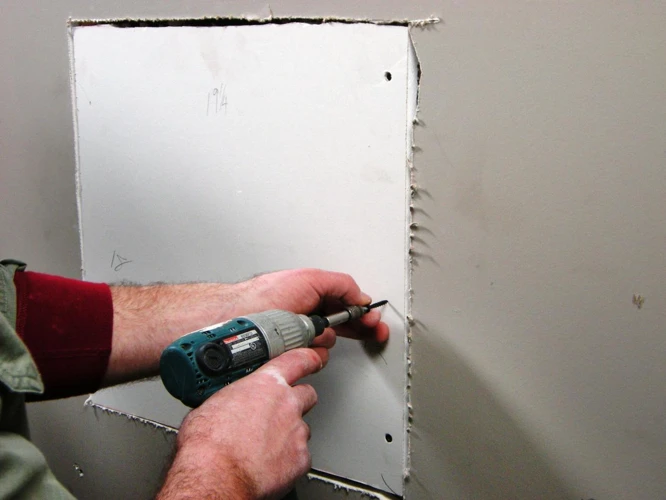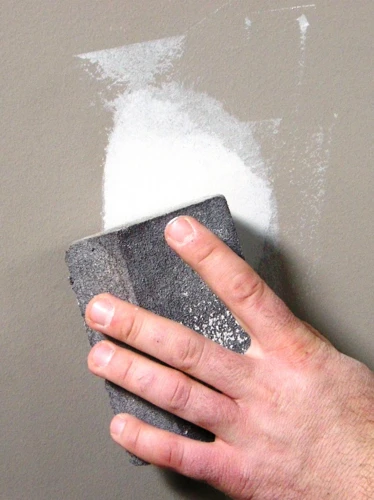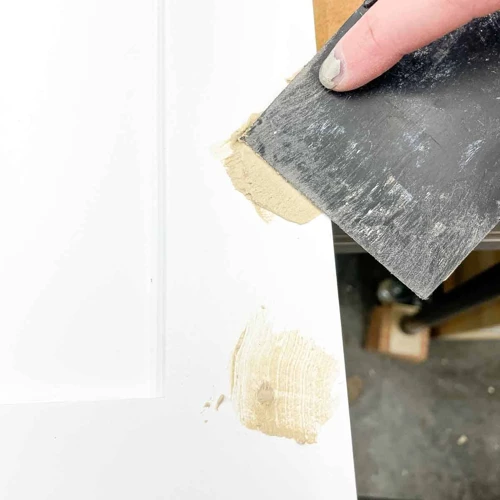When tackling any repair project, the success of the outcome often hinges on the quality of the preparation. This is especially true when dealing with holes and cracks that need to be filled or sealed. Proper hole preparation and crack preparation methods are not only vital for the structural integrity of the repair but also for its longevity. As such, understanding the right techniques and procedures is paramount.
Hole Preparation for Repair Projects
The initial step in any repair project involves rigorous hole preparation. This process is crucial because any debris or contaminants left behind can impede the adhesion of the filling material. Preparing holes for filling requires careful attention to detail to ensure that the substrate is clean, dry, and able to bond effectively with the repair material.
Crack Preparation Methods
Crack cleaning, on the other hand, often requires a different approach. Various crack preparation methods exist to tackle the diverse types of fractures that can occur in materials. Whether the crack is in concrete, metal, or plastic, each material demands a tailored surface prep for repairs to ensure the filling compound properly adheres and performs as expected.
Effective Hole Cleaning Techniques
To ensure a reliable repair, employing effective hole cleaning techniques is a must. The goal is to create a clean environment free of any substances that could interfere with the repair material. This often involves removing dust, oils, and other contaminants that could compromise the integrity of the repair.
Preparing Holes for Filling: A Step-by-Step Guide
- Inspect the hole to understand the extent of the damage and determine the necessary tools and materials.
- Remove any loose material within the hole using a brush or vacuum.
- Thoroughly clean the surface around the hole to ensure a clean bonding area for the repair material.
- Allow the area to dry completely, as moisture can prevent proper adhesion.
- Apply the repair material as directed, ensuring it fills the hole completely and bonds with the surrounding material.
Tools and Materials for Proper Hole Cleaning
Choosing the right tools and materials is crucial for effective hole cleaning. Brushes, vacuums, and cleaning solutions are typically part of the arsenal. For deeper or more complex holes, specialized tools may be required to reach into crevices and ensure a thorough cleaning.
Comprehensive Guide to Concrete Crack Cleaning
Concrete crack cleaning is a task that requires a methodical approach to ensure that the crack is ready to be sealed or filled. The goal is to remove all contaminants that could prevent the filler from adhering to the concrete surface.
Surface Prep for Repairs: Ensuring Strong Adhesion
The surface prep for repairs begins with an assessment of the crack’s condition. Any loose particles or crumbling concrete must be removed to create a stable base for the filler. Afterward, the crack should be cleaned of any oils, grease, or biological growth that could interfere with the repair material.
Cleaning Cracks Before Sealing: Best Practices
Cleaning cracks before sealing is not only a best practice but also a necessity. This typically involves using a combination of mechanical and chemical cleaning methods to ensure that the crack is as clean as possible. It’s important to follow the instructions of the sealant manufacturer to ensure compatibility with the cleaning method used.
Crack Cleaning Tips and Tricks
With experience comes knowledge, and there are numerous crack cleaning tips and tricks that can make the process more efficient and effective. From choosing the right tools to understanding the nuances of different materials, these insights can greatly improve the quality of the repair.
Do’s and Don’ts in Crack Cleaning
- Do use the appropriate tools for the size and type of crack being cleaned.
- Don’t rush the cleaning process; thorough cleaning is essential for a durable repair.
- Do adhere to the safety guidelines for any chemicals or tools used during cleaning.
- Don’t forget to wear protective gear, such as gloves and safety glasses.
Innovative Crack Cleaning Solutions
Advancements in technology have led to the development of innovative crack cleaning solutions. These may include eco-friendly chemicals that effectively clean without harming the environment or new tools that allow for precision cleaning in hard-to-reach areas. Keeping abreast of these innovations can enhance the quality and efficiency of crack preparation.
Conclusion
Summary of Effective Hole and Crack Cleaning
In sum, both hole preparation and crack cleaning form the foundation for successful repair projects. Through the use of effective hole cleaning techniques and diligent crack preparation methods, the longevity and strength of repairs can be significantly improved. Ensuring that these steps are correctly executed can make all the difference in the outcome of a repair.
If you’re gearing up for a painting project in your home and want to ensure a flawless finish, it’s essential to prepare your surfaces properly. This includes dealing with any imperfections such as holes or cracks. Visit our comprehensive guide on how to prepare walls for painting and surface cleaning to get started. Additionally, if you’re facing issues with peeling paint, our article on how to fix peeling paint in your house can provide you with the steps to restore your walls to their former glory. And don’t forget, maintaining your tools is just as important as the prep work. Our insights on the importance of brush cleaning and maintenance will help you keep your painting tools in top condition for the best results.
Final Thoughts on Surface Prep for Repairs
Ultimately, the time and effort invested in surface prep for repairs are well worth the payoff in durability and performance. Whether dealing with holes or cracks, the principles of thorough cleaning and preparation remain the same. By following the guidelines laid out in this post, you can expect your repairs to stand the test of time.



